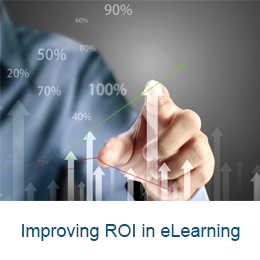
2020 was about virtual training evolution, and 2021 about better engaging and training virtual teams. The signs are clear – Focus in 2022 is on how to adapt training strategies for a hybrid workplace. In this article, I share insights you can use as you firm up L&D strategies for 2022.
How Has L&D’s Role Changed in 2021?
In 2020, learning-focused organizations grappled with the challenge of rapidly delivering virtual training to their workforce. But, as 2021 rolled out, we saw a paradigm shift to remote work, with L&D teams pivoting to implementing strategies that train and engage remote workers using a blended learning approach. These changes have transformed how employees now work – from a 100% remote model into a hybrid on- and off-site working model. Consequently, L&D’s role has evolved too.
How Has Training Evolved in the Last 2 Years?
Over the past 2 years, L&D’s focus has changed from being just narrow “training” focused into a broader one that includes building more inclusive and dynamic teams. The focus now is to deliver greater employee experiences so employees feel included and engaged. And that means L&D strategies must now focus on both learner experiences – what learning aspects learners like or dislike – as well as learning experiences – their overall experience during a learning journey.
To better serve the new “work order,” L&D teams can no longer only develop strategies that focus on just training employees to do specific jobs. Instead, a changed hybrid work environment requires a strategic rethinking of L&D’s role. And that requires strategies that makes inclusivity and engagement a central pillar in a hybrid workplace.
What Are the Key Aspects to Consider When Building a Learning and Development Strategy for the Future?
As hybrid workforces further evolve in the coming months, into a more decentralized model, so too must training structures transform to support them. Here are some key aspects to consider when building a learning and development strategy for the future:
- Maintaining a connect: Disconnected workers often feel excluded. Given that hybrid work is the new “normal,” to better foster inclusivity, L&D strategies must consider building and maintaining ongoing connections and contacts between learners/trainers/mentors.
- Driving collaborated learning: Hybrid workers collaborate with each other and offer real-time feedback to further their learning experiences. They’ll therefore expect L&D strategies to support these collaborative learning experiences. That means a greater focus on peer learning and social learning strategies.
- Driving autonomy among learners: The new hybrid workplace will force corporate learning strategies to provide greater autonomy to learners. This means L&D strategies must consider leveraging self-paced and self-directed learning.
- Understanding and integrating learner needs: The hybrid environment is a brand-new work paradigm with a different set of learner needs. And that calls for a new learning and development strategy, requiring L&D teams to understand and integrate those needs to better train a new generation of learners.
- Providing room for continuous learning: The workplace is constantly evolving, and so is the need to learn and apply new knowledge. Busy workers – especially in a hybrid environment, however, don’t want to log on to the corporate LMS each time they have learning opportunities. Making continuous learning, through both push and pull options, social learning, Performance Support Tools (PSTs), and other self-directed learning support, helps employees chart a continuous learning journey.
- Integrating LIFOW resources: Employees learn best when at work and at the point of need. As part of your learning and development strategy, make resources available to support learning in the flow of work (LIFOW). And that means including strategies for learning that are on demand and accessible to all, especially to remote and mobile workers. Make it selective and searchable, so they can get the exact information they need, when they need it, and at the point of need.
- Planning on how to innovate and experiment within L&D: As training teams evolve their L&D strategies for 2022, they’ll need to innovate and experiment with new methodologies and approaches. The need of the hour is for learning models that continue to evolve with transformations in the hybrid work model. Working with external partners and outsourcing critical L&D functions, that in-house resources might not adequately handle, is one aspect of the new work paradigm learning and development strategy.
What Should Be the Focus Areas for L&D Planning in 2022?
As you begin planning your 2022 learning and development strategy, it’s important to stay focused on some key areas. These include aspects that demonstrate the value of your team to the organization in building high performance, fully engaged, inclusive hybrid workspaces.
- Designing effective learning experiences and learner experiences: There’s a subtle distinction between “learning” and “learner” experiences, and these require highlighting in your L&D plans for 2022. While a learner’s experience encompasses every aspect they encountered in the act of participating in learning, a learning experience covers interactions between learners and their learning environments. Make sure you highlight both these experiences along a learner’s learning pathway.
- Adopting agile learning strategies: For 2022, the key remains in building flexible, agile learning strategies that include frequent iterations of training design and development.
- Transforming upskilling and reskilling for the hybrid workplace: The new hybrid workplace paradigm requires a new set of skills. Make sure your learning and development strategy focuses on delivering workers the skills they’ll require for the future – and not enhancing skills they used in the past.
- Driving learning culture transformation: The learning and development strategy for 2022 must embrace the transformation of learning culture across the organization. This includes building effective learning frameworks that support a culture of continuous and lifelong learning.
- Measuring and demonstrating the impact of training: Though many business leaders accept the value that L&D brings to the organization, L&D leaders must continue to demonstrate that value – both in terms of fiscal impact as well as the impact on building a more inclusive, engaged, and high-performance hybrid workforce.
- Integrating measures to plan L&D’s transition from cost centers to performance drivers and value creators: The “traditionalist” business leader views L&D as a cost center. As you plan your 2022 hybrid L&D strategies, it’s important to focus on the business impact of your training. It’s vital to not lose focus of L&D’s role as a function that creates value and drives performance. To do this, make sure your training metrics align with key organizational Key Performance Indicators (KPIs). Focus on high-value metrics, such as revenue generation, performance enhancements, higher compliance to mandates, and improved performance.
Parting Thoughts
2021 has seen paradigm shifts in working models, notably an enhanced focus on the hybrid workforce. That trend, along with a greater emphasis on inclusivity, participation, engagement, and performance, will define learning and development strategies for 2022. I hope the information provided in this article will help you plan and craft L&D strategies for 2022 by highlighting key focus areas to consider when building those strategies.
Read More
- eBook: How to Conduct a Comprehensive L&D Audit and Prepare a Strategic Plan for the Future
- How L&D Can Leverage Learning and Performance Consulting to Meet the Enhanced Expectations from the Business
- How to Build a Culture of Innovation and Experimenting in L&D by Leveraging the Expertise of a Strategic Partner
- What L&D Teams Must Do to Build a Growth Mindset and a Learning Mindset in Employees
- How to Make a Business Case for Continuous Learning



